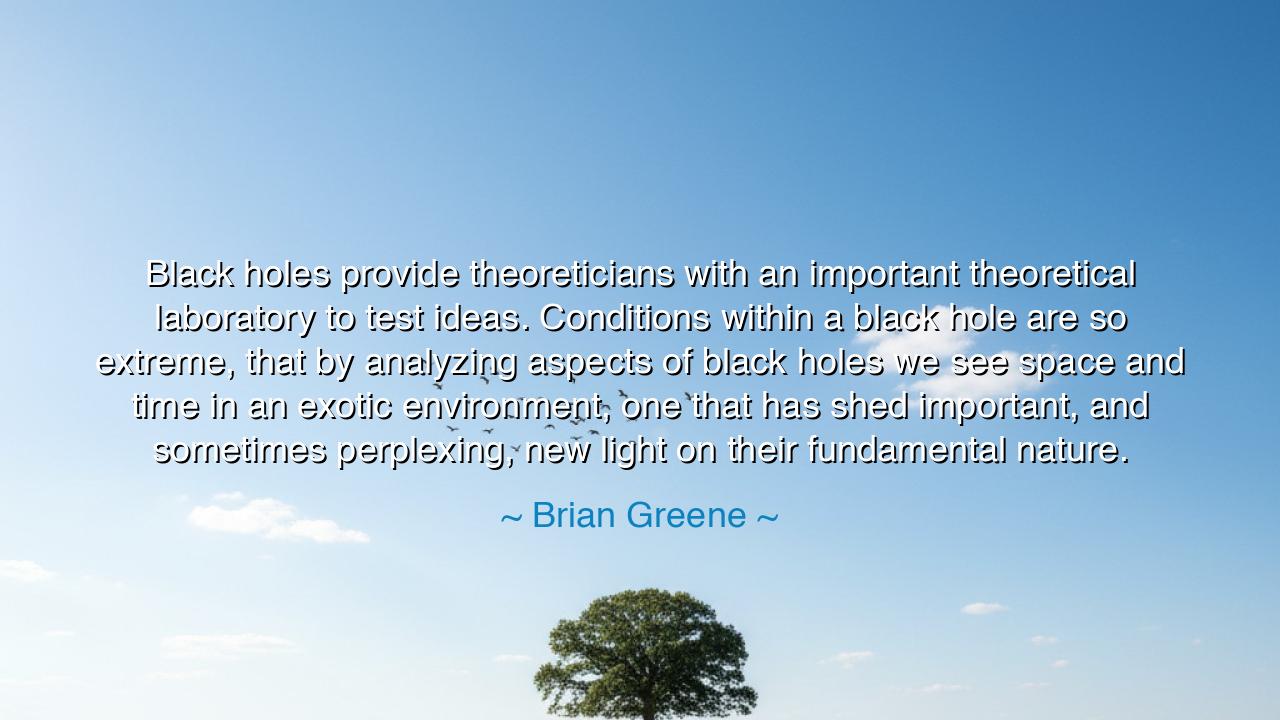
Black holes provide theoreticians with an important theoretical
Black holes provide theoreticians with an important theoretical laboratory to test ideas. Conditions within a black hole are so extreme, that by analyzing aspects of black holes we see space and time in an exotic environment, one that has shed important, and sometimes perplexing, new light on their fundamental nature.






Hear the words of Brian Greene, interpreter of the cosmos, who proclaimed: “Black holes provide theoreticians with an important theoretical laboratory to test ideas. Conditions within a black hole are so extreme, that by analyzing aspects of black holes we see space and time in an exotic environment, one that has shed important, and sometimes perplexing, new light on their fundamental nature.” At first these words may seem only of physics, of chalkboards and equations, but in truth they carry a wisdom far beyond science—they speak of the human quest to gaze into the most violent, mysterious abysses of creation, and from them to learn who we are.
The origin of this thought lies in the marriage of two great visions: Einstein’s general relativity and the quantum world of the very small. For in the furnace of a black hole, where gravity crushes stars and light itself cannot escape, these two pillars of knowledge collide. What is space? What is time? In such an environment, these concepts, which we think solid, dissolve into paradox. To study the black hole, Greene tells us, is to study the very foundation of existence in its most extreme test. It is not a telescope alone, but a crucible of thought where the limits of human understanding are pushed to their breaking point.
Consider the story of John Michell and Pierre-Simon Laplace, who centuries ago first imagined “dark stars,” so massive that even light could not escape. Their ideas, mocked and forgotten, were seeds that would only blossom much later, when Einstein’s theory revealed the curvature of spacetime itself. And then, in the twentieth century, Stephen Hawking showed that black holes are not mere graves of light, but paradoxical fountains of radiation, challenging our notions of permanence and destruction. Each discovery was born from daring to study the extreme, to take the impossible as a laboratory for truth.
But mark this well: Greene’s words are not only about astronomy—they are about the path of wisdom itself. For in life, too, it is in the extremes—in suffering, in failure, in loss—that we often glimpse truths unseen in comfort. Just as space and time reveal their hidden nature at the edge of a black hole, so too does the soul reveal its strength at the edge of despair. The perplexing light that emerges from darkness is not only cosmic, but human. Black holes are mirrors of our own struggles: crushing, terrifying, but also capable of revealing new dimensions of who we are.
History bears witness to this pattern. In the bleak winter of 1777 at Valley Forge, George Washington’s army nearly froze, hungry and despairing. Many thought the revolution would collapse into that black hole of suffering. Yet from those extreme conditions came resilience, unity, and resolve that would later carry them to victory. Just as the black hole becomes a laboratory for physics, so Valley Forge became a laboratory for freedom—an environment so harsh that only by enduring it did new light emerge.
The lesson for us is plain. Do not fear the extreme places of your life. Do not turn from the abyss when it yawns before you. Instead, like the physicist, treat it as a laboratory, a place to learn what ordinary days cannot teach. When you are pressed, when you are tested, when time itself feels distorted by grief or struggle, know that there lies your chance to see life anew. The paradoxes of your trial may one day shine with unexpected clarity, just as the mysteries of black holes illuminate the hidden structure of the universe.
Therefore, O seeker, let Greene’s wisdom dwell in your heart: embrace the black holes of thought, of life, of destiny. Use them not as excuses for despair, but as gateways to revelation. For the fundamental nature of space and time is revealed in the furnace of extremes, and the fundamental nature of the human spirit is revealed in the same. Stand firm, endure the crushing weight, and in that very pressure, you will discover light that perplexes, yet also guides. Thus the darkness itself becomes your teacher, and from the void you emerge greater than before.






AAdministratorAdministrator
Welcome, honored guests. Please leave a comment, we will respond soon